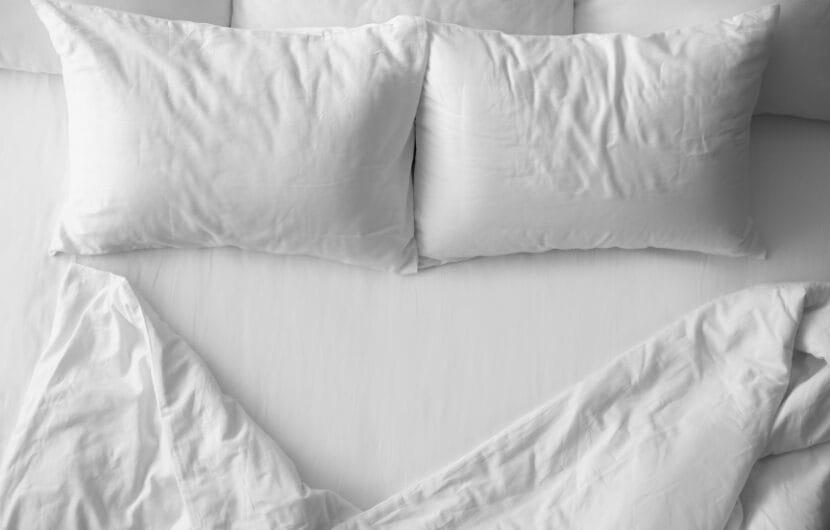Blog
Down Comforter Buying & Care Guide 2025
A down comforter offers exceptional warmth and comfort, making it a popular choice for both home and business use. This guide covers everything you need to know about selecting the right down comforter, including key features like fill power and fabric types. We’ll also share tips on how to care for your comforter.
What is a Down Comforter?
A down comforter is a type of blanket filled with soft feathers from ducks or geese. It’s super light but incredibly warm. Compared to synthetic blankets, down comforters breathe better and feel more natural. They’re perfect for anyone who loves the cozy, fluffy feel of a cloud while they sleep.
Why is Down Comforters So Popular?
- Warmth: Down keeps you toasty without feeling heavy.
- Lightweight: It provides amazing warmth but doesn’t weigh you down.
- Comfort: Soft, breathable, and perfect for all seasons.
- Long-lasting: If you take care of it, a good down comforter can last for years.
- Eco-friendly: Many down comforters are made sustainably, helping reduce your environmental impact.
Recommended reading: Exploring Sustainable Bamboo Fabric

How to Select the Right Down Comforter?
Types of Down
- White Duck Down: Common, good warmth, used in mid-range bedding.
- Gray Duck Down: Slightly lower quality, visible in light fabrics.
- Gray Goose Down: Warm but less refined, often used in darker fabrics.
- White Goose Down: Premium choice, excellent loft and durability.
Fill Power, Fill Weight, and Warmth
- Fill Power: This measures how fluffy the down is. Higher fill power means better warmth without extra weight. A fill power of 600 is a good standard to look for.
- Fill Weight: This refers to how much down is in the comforter. The more down, the warmer it is.
- Warmth Levels: Down comforters come in different weights. If you live in a warmer area, choose a lighter fill. If you’re in a cold climate, go for a heavier one.
Shell Fabric & Allergy Protection
- Outer Fabric Options: Common choices include cotton (breathable and soft), silk (luxurious and cooling), and blends for durability and cost-efficiency.
- Thread Count & Leak Prevention: A higher thread count (typically 230–400) helps prevent down leakage while maintaining softness and airflow.
- Construction Methods:
- Baffle Box: Adds loft and prevents cold spots.
- Sewn-through: Simpler, flatter, more affordable.
- Allergy Protection: Hypoallergenic treatments reduce allergens—essential for sensitive users or shared spaces like hotels.
Quality & Safety Certifications
- RDS (Responsible Down Standard): Ensures down is ethically sourced with animal welfare in mind—no live-plucking or force-feeding.
- Downmark: Certifies that the product contains genuine, high-quality down and meets Canadian labeling standards.
- OEKO-TEX®: Verifies that textiles are free from harmful substances, safe for human use.
- EU Ecolabel: Recognizes environmentally friendly products with low impact across their life cycle.
Size and Shape
Make sure you pick a comforter that fits your bed. Whether you have a twin, queen, or king-size bed, choose a comforter that matches. For more specific needs, like a larger bed or a child’s room, you can find custom options.
What Comforters Do Hotels Use?
For hotels or businesses buying comforters in bulk, durability and easy cleaning are key. Most hotels use medium-fill down comforters, which are comfortable year-round. They also prefer machine-washable comforters for ease. When buying for a business, choose a comforter with durable stitching and a high-quality fabric to stand up to frequent washing.
Related reading: What Kind Of Hotel Comforters Do Resorts and Hotels Use?

Down Comforter vs. Other Types
| Feature | Down Comforter | Down Alternative | Wool Comforter | Cotton Comforter | |
| Filling Material | Natural goose/duck down | Microfiber or polyester | Natural wool | Cotton batting | |
| Warmth & Insulation | Excellent warmth, lightweight | Good warmth, heavier feel | Very warm, naturally regulates heat | Moderate warmth | |
| Feel | Soft, lofty, luxurious | Soft, slightly dense | Cozy, breathable | Crisp, natural | |
| Weight (Perceived) | Light | Medium to heavy | Medium to heavy | Medium | |
| Hypoallergenic | No (unless treated) | Yes | Usually yes | Yes | |
| Durability | 10+ years with care | 3–5 years | 5–10 years | 3–5 years | |
| Care & Maintenance | Dry clean or special wash | Machine washable | Often dry clean | Machine washable | |
| Cost | $$$
(Premium) |
$–$$
(Budget to mid-range) |
$$–$$$
(Mid to premium) |
$–$$
(Low to mid-range) |
|
| Best for Home | Luxury buyers, cold climates | Allergy-sensitive, easy care users | Natural lifestyle, year-round use | Budget shoppers, everyday use | |
| Best for Hotel | Luxury hotels, winter resorts | Hospitals, student housing | Eco-hotels, wellness resorts | Budget hotels, seasonal rotation |
How to Clean or Care A Down Comforter?
Daily Care Tips
- Fluff it up: Regularly shake and fluff your comforter to keep it puffy and even.
- Let it breathe: Every once in a while, air it out to keep it fresh.
- Use a duvet cover: This helps protect the comforter from dirt and spills.
Washing Your Down Comforter
- Machine Wash: If your comforter is machine washable, use a gentle detergent and cold water. Choose a gentle cycle to avoid damaging the down.
- Dry Cleaning: If the care label says dry clean only, don’t skip it. Dry cleaning helps maintain the fluff and quality of the down.
- How Often to Wash: No need to wash a comforter often. Only wash it when it gets really dirty or once a year if it’s not exposed to spills or stains.
Drying Tips
Drying is the most important part of keeping your down comforter fluffy. Use low heat on your dryer and add a couple of clean tennis balls or dryer balls to help fluff up the down. Don’t use high heat — it can damage the down.
Storage & Moisture Protection
- Long-Term Storage: Store the comforter clean and completely dry in a cool, dry place to prevent mold and odor buildup.
- Moisture & Pest Prevention: Use silica gel packs or natural desiccants. Add cedar blocks or lavender sachets to deter insects without harsh chemicals.
- Storage Options:
- Vacuum Bags: Space-saving but best for short-term use.
- Breathable Cotton Bags: Ideal for long-term storage, allowing airflow while keeping dust and moisture out.
Cleaning Tips for Hotels
For businesses like hotels or hospitals, it’s important to have a routine for cleaning down comforters. Many commercial laundromats offer services that can handle large comforters without ruining the down. If you’re buying for a business, consider machine-washable options for easy care.

FAQs
1. Is a down comforter the same as a duvet?
Not quite. A duvet is just a cover for a comforter. You put your down comforter inside the duvet to keep it clean and protected.
2. Are down comforters good for allergy sufferers?
Yes, many down comforters are treated with hypoallergenic treatments to reduce the risk of allergic reactions. If you’re extremely allergic, though, you might want to consider synthetic alternatives.
3. How can I tell if my comforter is really down?
Look for labels like RDS (Responsible Down Standard) or Downmark. These certifications tell you that the down is genuine. You can also check the fill power — higher numbers indicate better quality.
4. Can a down comforter be repaired?
If your comforter gets small rips or damage, it can often be repaired by a professional. Keeping it clean and well-maintained can help prevent damage in the first place.
5. How long will my down comforter last?
With proper care, a down comforter can last anywhere from 10 to 20 years. Make sure to fluff it regularly, wash it gently, and store it properly to get the most out of it.
6. What is a good fill weight for a down comforter?
For a comforter that works well in all seasons, look for a fill weight around 400-600 grams. This gives you the warmth you need without it feeling too heavy.
7. Are down comforters hot? Can I use it in the summer?
Yes! If you get a comforter with a lighter fill power, it can keep you cool in warmer months. Down is naturally breathable, so it adjusts to your body temperature.
8. What does “all-season” comforter mean?
An all-season comforter is designed to be comfortable year-round. It’s typically filled with a medium weight of down, so it works in both cooler and warmer climates.
9. Why are all down comforters white?
Not all are white. Down comforters are often white because down feathers from ducks or geese are naturally white, making them easy to clean and dye. White also helps show the quality of the down filling, as any discoloration would be more noticeable. Additionally, white down is a neutral color that fits most bedding styles.
10. What is a good thread count for comforter?
A good thread count for a comforter is typically between 200 and 400. This range offers a soft, breathable feel while maintaining durability. Higher thread counts can feel smoother but may reduce breathability, which matters for all-season comfort.
Conclusion & Recommendations
When choosing a down comforter, keep in mind your needs for warmth, weight, and care. For home use, balance quality and price. For businesses, focus on durability and ease of maintenance.
QL Textiles delivers premium down, polyester & specialty fibers, tailored for hospitality, healthcare & retail. Enjoy customizable fill weights, fabrics & stitching, with MOQs from 200 pcs, 25–35 day lead times, eco-friendly materials & global shipping—ensuring quality & reliability.
Conclusion
A down comforter offers exceptional warmth and comfort, making it a popular choice for both home and business use. This
Leave a Comment

 Nov 27, 2025
Nov 27, 2025 
